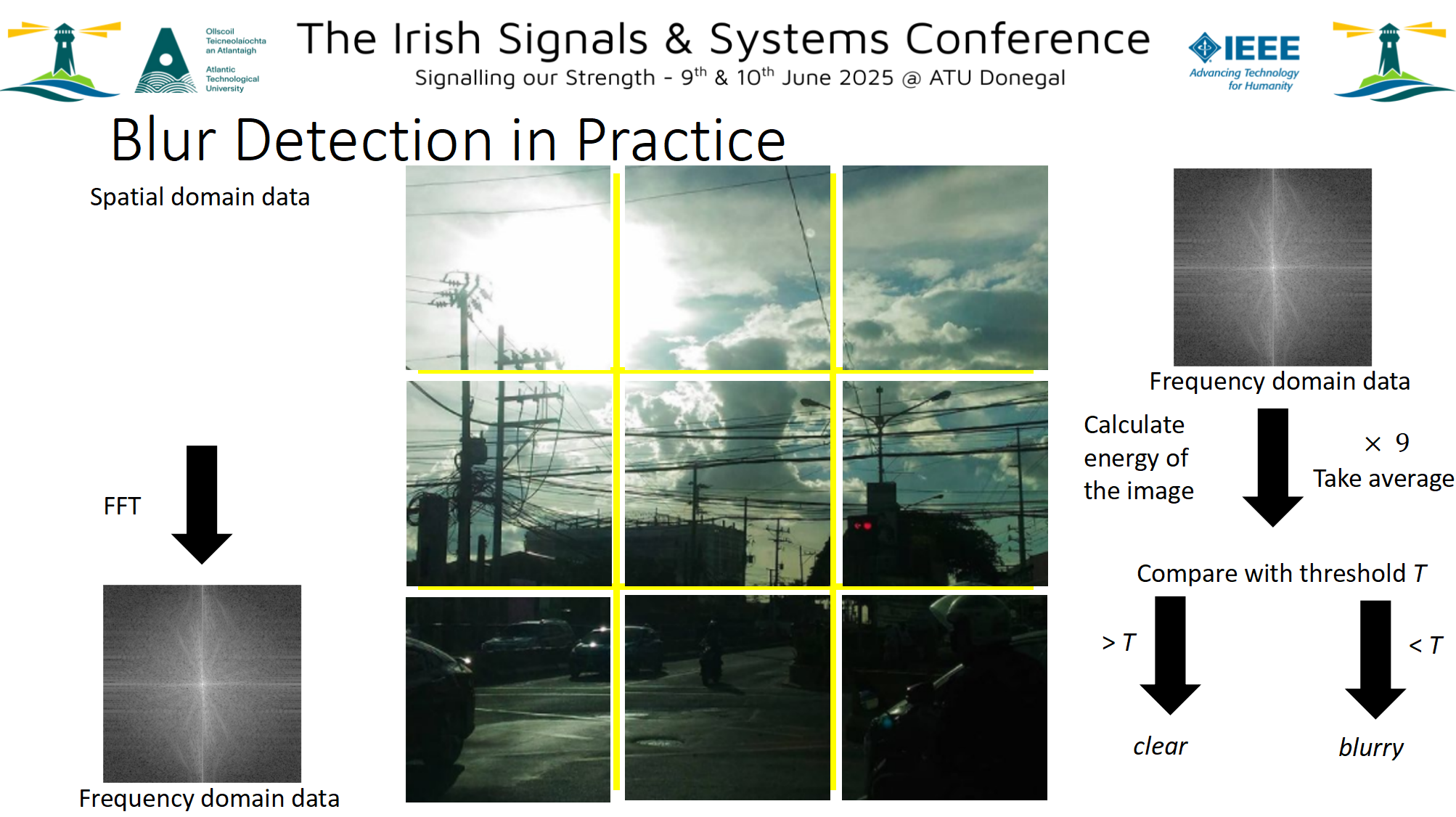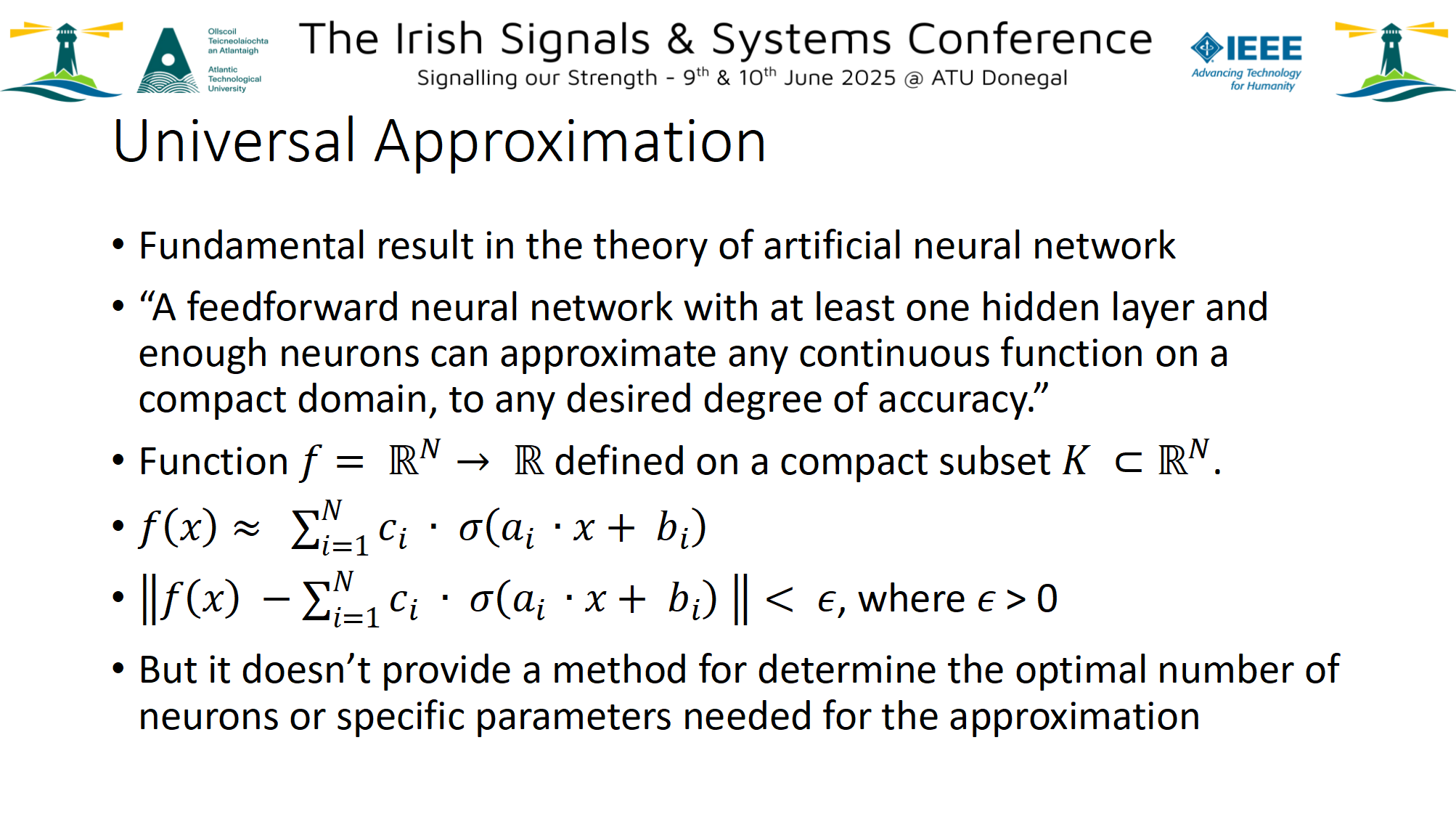Universal Approximated Real-Valued Fast Fourier Transform for Image Blur Detection
Date:
This talk presents a novel framework for image blur detection using a Universal Approximated Real-Valued Fast Fourier Transform (FFT). The method leverages the universal approximation theorem to design a lightweight artificial neural network (ANN) that approximates the real part of FFT outputs, enabling efficient blur detection in images.
Key contributions include:
- A real-valued FFT algorithm optimized for grayscale images, reducing computational complexity by exploiting conjugate symmetry.
- A fully connected ANN with a single hidden layer, trained to approximate FFT outputs with reduced neuron counts.
- Empirical validation using Kaggle image datasets (long-range, mid-range, short-range) with clear, defocused, and motion-blurred samples.
- Performance evaluation showing up to 45% computational reduction while maintaining detection accuracy.
- Suitability for resource-constrained edge devices, such as those used in surveillance and autonomous systems.
This approach demonstrates a promising direction for integrating signal processing and neural approximation in real-time image analysis tasks.
Presented by Xinghao Wang, Queen’s University Belfast, at ISSC 2025.


